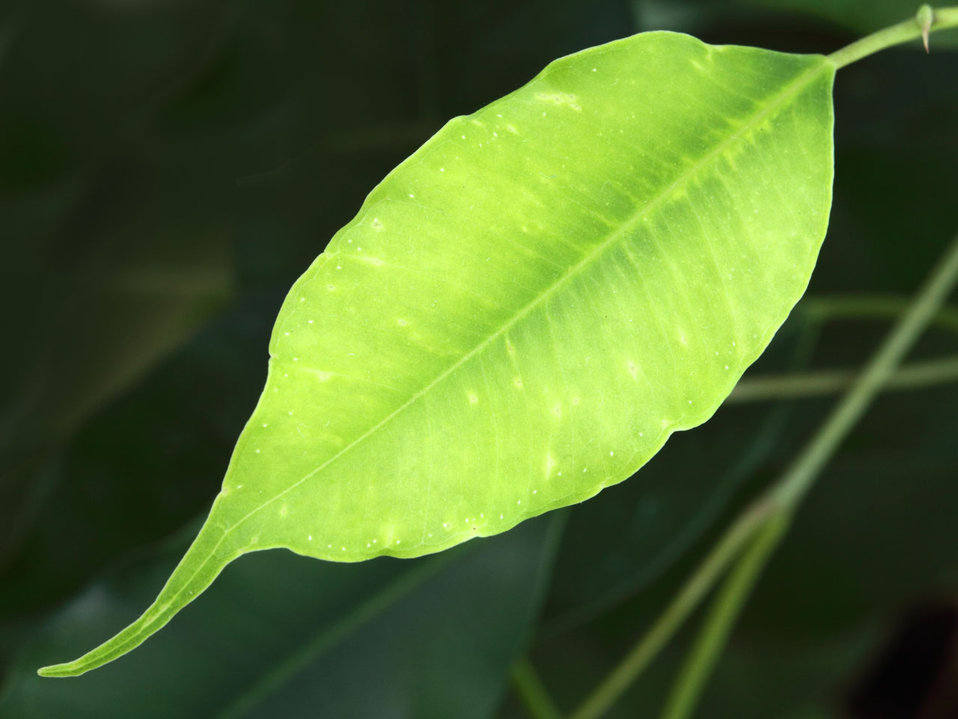
Students will:
- Observe plant parts and describe each part’s function.
- Record observations.
- Experiment with how plants absorb sunlight.
- Variety of large leafs still on plants
- Masking tape
- Clear Tape
- Large Piece of paper
- Leaf Functions Worksheet – PDF
- Garden Journals
Reviewing Plant Parts
- Review plant parts: flower, stems, leaves, roots.
- Help students create a foldable flower to review the functions of the parts of a plant by demonstrating these steps:
- Take a 8 ½ x 11 sheet of paper and fold it horizontally.
- Draw a plant and its parts on the outside of the folded paper. The inside of the sheet will be used for recording the functions of plants.
- Cut parts of the drawn plant into four sections (flower, stem, leaves, and roots; see sample).
- Record the function of the leaves for plants.
- Revisit this foldable flower to complete the function portions for roots, stem, and flower sections, as those concepts are studied in later labs.
- Students identify the different parts of the plants (e.g., flower, stem, leaf, and roots). Explain vital functions of each plant part.
- Ask:
- What is the main function of a plant’s leaves?
- How do the structures of plants support their roles in food production?
Observing Leaves and Light
- Review the Plants Need Light worksheet students made.
- Distribute the leafy plants to each student.
- Tell students that plants make their own food using light.
- Students place masking tape in patches on the leaves to experiment with varying degrees of light absorption.
- Guide students in a light experiment by following these steps (this experiment will need to be set up for five days):
- Provide cut pieces of masking tape to place on their plant leaf.
- Be sure that students do not cover all of the leaves. The uncovered leaves should be able to continue to absorb sunlight.
- Place clear tape over some parts of the leaves.
- Place small amounts of petroleum jelly on other parts of the leaves.
- Students record these steps with drawings in their journals.
- After five days, remove the patches. Have students record their observations in their science notebooks.
- Students examine the lighter-colored spots on the leaves. Ask: What do you think happened to create lighter-colored spots in the leaves? (The patches prevented the light from reaching the leaves.)
Student Reflection
- Which part of the plant is vital in order for it to be able to make its own food? (Leaves)
- What helps the leaf make food for the plant? (The sun)
- All leaves change sunlight into energy through photosynthesis.
- The leaves are the primary food-making part of the plant.
- Leaves absorb carbon dioxide from the air, combine it with water that comes through the roots of the plants to make food (a sugar molecule known as glucose), and release oxygen into the air.
- Small
- Slender
- Wide
- Prickly
- Hairy
- Soft
- Hard
- Smooth
Academic Standards
Crosscutting Concepts
The shape and stability of structures of natural and designed objects are related to their function(s). Substructures have shapes and parts that serve functions.
Disciplinary Core Ideas
Structure and Function: All organisms have external parts. Plants have different parts (roots, stems, leaves, flowers, fruits) that help them survive and grow. Different animals use their body parts in different ways to see, hear, grasp objects, protect themselves, move from place to place, and seek, find, and take in food, water and air.
Energy in Chemical Processes and Everyday Life: The energy released [from] food was once energy from the sun that was captured by plants in the chemical process that forms plant matter (from air and water).
Science & Engineering Practices
Planning and carrying out investigations in 6-8 builds on K-5 experiences and progresses to include investigations that use multiple variables and provide evidence to support explanations or solutions. Conduct an investigation to produce data to serve as the basis for evidence that meets the goals of an investigation. Make observations and/or measurements to produce data to serve as the basis for evidence for an explanation of a phenomenon or test a design solution. Test two different models of the same proposed object, tool, or process to determine which better meets criteria for success
Use data to evaluate claims about cause and effect.
This lesson is part of the Berkeley Unified School District's Gardening and Cooking Program curriculum.




